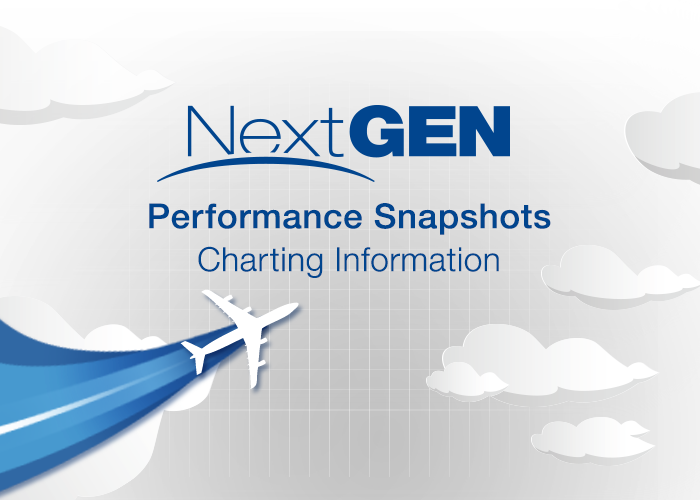Orlando International Airport (MCO) experienced a 2.7 percent increase in passengers in 2014 to reach 35.7 million. The number of operations decreased 0.5 percent from 2013 to 290,331. In 2014, 172,869 metric tons of cargo passed through MCO's facilities, an increase of 1.3 percent from the previous year. Southwest Airlines is the airport's largest carrier of passengers.
Several NextGen capabilities and enabling improvements have been implemented including Airport Surface Detection Equipment-Model X, External Surface Data Release, Performance Based Navigation procedures, basic rerouting, an Equivalent Lateral Spacing Operation Standard, Adapted for Time Based Flow Management use, and Expanded Low-Visibility Operations Using Lower Runway Visual Range Minima.
All airport information shown above is reported by Calendar Year (CY).
ScorecardView as Charts
The following metrics summarize performance over a large set of diverse operations at this location. As such, their purpose is to reflect general trends as experienced by aircraft operators and passengers, without regard to their underlying drivers. For this reason, metric values should not be compared to operational impacts attributed to specific NextGen capabilities, where these are provided.
All Information below is in Fiscal Years (October 1 - September 30).
| Performance Indicator (FY) | 2009 | 2010 | 2011 | 2012 | 2013 | 2014 | 2015 |
|---|---|---|---|---|---|---|---|
|
Average Gate Arrival Delay
Minutes per Flight During reportable hours, the yearly average of the difference between the Actual Gate-In Time and the Scheduled Gate-In Time for flights to the selected airport from any of the ASPM airports. The delay for each fiscal year (FY) is calculated based on the 0.5th — 99.5th percentile of the distributions for the year. Flights may depart outside reportable hours, but must arrive during them. The reportable hours vary by airport. |
1.4 | 1.2 | 2.1 | 0.1 | 2.3 | 5.1 | 3.2 |
|
Average Number of Level-offs per Flight
Counts per Flight The count of level-offs as flights descend from cruise altitudes to the arrival airport, averaged for the fiscal year. |
1 | 1 | 2.6 | 2.6 | 2.7 | 2.7 | 2.7 |
|
Distance in Level Flight from Top of Descent to Runway Threshold
Nautical Miles per Flight The distance flown during level-off segments as flights descend from cruise altitudes to the arrival airport, averaged for the fiscal year (FY). |
1 | 1 | 42.0 | 42.3 | 43.4 | 43.5 | 44.7 |
|
Effective Gate-to-Gate Time
Minutes per Flight During reportable hours, the difference between the Actual Gate-In Time at the destination (selected) airport and the Scheduled Gate-Out Time at the origin airport. Flights may depart outside reportable hours, but must arrive during them. The reportable hours vary by airport and the results are reported by fiscal year (FY). |
150.9 | 150.7 | 150.4 | 149.0 | 154.6 | 159.1 | 160.0 |
|
Taxi-In Time
Minutes per Flight During reportable hours, the yearly average of the difference between Wheels-On Time and Gate-In Time for flights arriving at the selected airport from any of the Aviation System Performance Metrics (ASPM) airports. Flights may depart outside reportable hours, but must arrive during them. The reportable hours vary by airport. |
7.0 | 7.6 | 7.7 | 7.6 | 7.8 | 7.7 | 8.2 |
|
Taxi-Out Time
Minutes per Flight During reportable hours, the yearly average of the difference between Gate-Out Time and Wheels-Off Time for flights from the selected airport to any of the ASPM airports. Flights must depart during reportable hours, but may arrive outside them. The reportable hours vary by airport. |
13.1 | 13.3 | 13.6 | 13.5 | 13.9 | 14.2 | 14.6 |
| 1 Consistent data for the time period prior to FY 2011 are not available. | |||||||
As described by the International Civil Aviation Organization (ICAO), efficiency addresses the operational and economic cost-effectiveness of gate-to-gate flight operations from a single-flight perspective. In all phases of flight, airspace users want to depart and arrive at the times they select and fly the trajectory they determine to be optimum.
| Performance Indicator (FY) | 2009 | 2010 | 2011 | 2012 | 2013 | 2014 | 2015 |
|---|---|---|---|---|---|---|---|
|
Average Daily Capacity
Number of Operations During reportable hours, the average daily sum of the Airport Departure Rate (ADR) and Airport Arrival Rate (AAR) reported by fiscal year (FY). The reportable hours vary by airport. |
2,384 | 2,352 | 2,353 | 2,317 | 2,427 | 1,914 | 2,183 |
|
Average Hourly Capacity During Instrument Meteorological Conditions (IMC)
Number of Operations The average hourly capacity reported during IMC weather conditions (as defined by ASPM). Capacity is defined as the sum of Airport Departure Rate (ADR) and Airport Arrival Rate (AAR). It is calculated based on the reportable hours at the destination airport. The reportable hours vary by airport. |
159 | 156 | 153 | 154 | 160 | 125 | 132 |
As described by the International Civil Aviation Organization (ICAO): The global Air Traffic Management (ATM) system should exploit the inherent capacity to meet airspace user demands at peak times and locations while minimizing restrictions on traffic flow. ICAO also notes: The ATM system must be resilient to service disruption and the resulting temporary loss of capacity.



